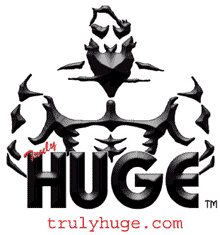
Click Here for Free Bodybuilding and Fitness Magazine Subscription
Whey Protein FAQ
Whey Protein Questions And Answers
Whey protein is not just a popular choice among fitness enthusiasts; studies have shown that it can significantly improve muscle growth, enhance recovery, and even support weight loss. This article will dive into the most frequently asked questions about whey protein, providing comprehensive answers to help you make informed decisions.
What is Whey Protein?It is a very high quality protein derived from milk, it has the highest biological value of any protein known and has quickly become the most popular sports nutrition supplement sold today.
How is it whey protein made?
It is made using ultra filtration of sweet dairy whey. Using the latest dairy technology, sweet dairy whey, a product from cheese manufacturing, is passed through a complicated series of ceramic filters (ultra filtration). As the "whey" passes through the filters fat and lactose are removed to leave a concentrated whey protein in liquid suspension. The liquid concentrate is then dried and instantised for easy mixing. The whole process is carried out without the use of excess heat which helps prevent any damage occuring to the product.
What is ion-exchange?
Ion-exchange is another method that is used to make whey protein. Sweet dairy whey is combined with a special resin in large reaction vessels. The vessels are charged with electricity and the resin bonds to selected proteins. The resin and proteins are then removed from the vessels and the charge is reversed to leave only the whey protein. The process yields a very high protein percentage but unfortunately leaves behind many beneficial proteins. The process is therefore inferior when compared to "ultra filtration" as used by Reflex Nutrition.
What is hydrolysed or pre-digested whey protein?
Hydrolysed or pre-digested proteins have been treated with enzymes to break the proteins down into smaller peptides and amino acids. All hydrolysed proteins generally taste foul, the very bitter taste comes from the high percentage of peptides and amino acids. The degree of hydrolysis varies from about 5%-25%. The higher the percentage the more hydrolysis that has taken place and the more bitter it will taste.
If a whey protein supplement does contain hydrolysed protein it should state both the degree of hydrolysis and a table listing the molecular weight of the peptides present.
An important point to realise is that a hydrolysed product contains virtually NO biologically active fractions. Nearly all of the fractions like glycomacropeptide are destroyed during the process.
Hydrolysed products are primarily used clinically in enteral tube feeds. They are used in this instance not because it is absorbed more easily, but because they are hypoallergenic. Some babies are allergic to certain whey protein fractions like beta-lactalbumin; a way round this is to hydrolyse the protein, thus breaking down the allergen part of the protein into peptides.
What is the difference between whey protein concentrate and whey protein isolate?
First of all both concentrate and isolate are made using the same ultra filtration technology. However during the process of ultra filtration it is possible to vary the amount of filtration units the whey passes through. By varying the time of processing and filtration units it is possible to make concentrates 75-85% and isolates 90%+ protein.
The whey protein isolate takes longer to produce because it requires more time and extra filtration. During which, nearly all fat and lactose are removed.
The typical specifications for a protein isolate are:
Protein 90%
Fat 0.5%
Lactose 0.5%
The typical specifications for a high quality protein concentrate are:
Protein 80-85%%
Fat 5-8%
Lactose 4-10%
Why is whey protein especially good for athletes and bodybuilders?
Importantly it is a very high quality protein; it is a complete protein that contains all of the essential amino acids that your body cannot make. More importantly, whey protein is the richest source of branch chain amino acids (BCAA). BCAA's consist of L-Leucine, L-Isoleucine and L-Valine which are vital for muscle tissue repair and growth; this is one reason why it has become so popular with bodybuilders.
Is whey protein easy on the stomach?
Whey protein is easily absorbed by the body becuase it is highly soluble. Some whey protein products contain added digestive enzymes.
What is the pH of whey protein?
Whey protein has a pH of approximately 6.5.
Can I take whey protein if I'm lactose intolerant?
Yes and no. You should avoid products that contain concentrate. These will typically contain anywhere from 5-15% lactose. The good news is that you can benefit from taking products that contain pure isolate, which usually only contain a maximum of 0.5-1% lactose.
Can I take whey protein if I'm a vegetarian?
Yes. It is a very good source of essential amino acids and branch chain amino acids - some vegetables lack these vital amino acids; it can help address any shortfall in your diet.
Is whey protein free from gluten and wheat?
Yes.
For the best protein supplement checkout Bio-Available Protein .

